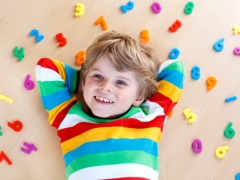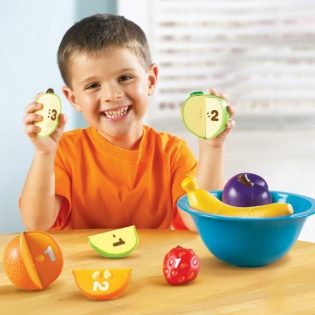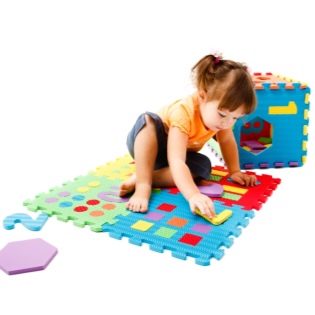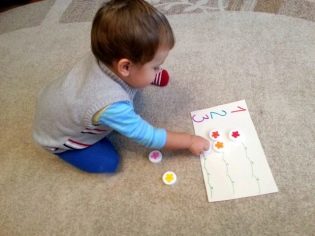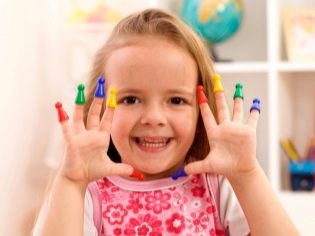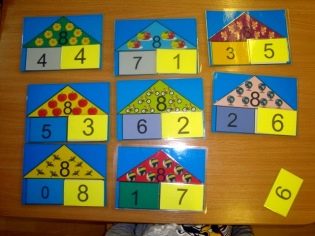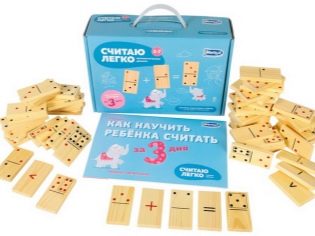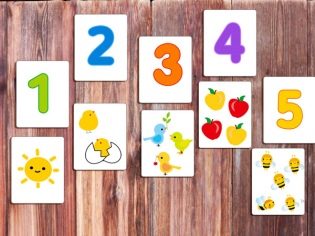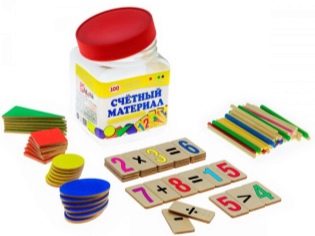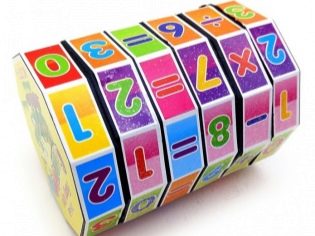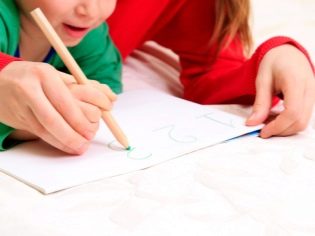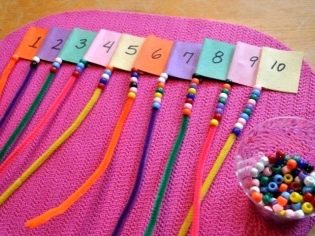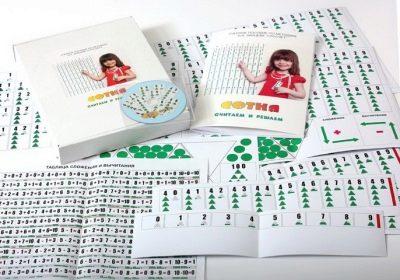How to teach a child the composition of the number to 10 and beyond?
Starting to learn and study numbers and counting, the child is confronted with the concept of the composition of a number. Many parents do not think and do not pay attention to this, engaging in the learning of sequences. However, the study of the composition of numbers will accelerate the memorization, as well as the child’s understanding of the principle of the formation of numbers.
Why do you need it?
Teaching a child the composition of numbers is important. Starting from a simple 10 and introducing the concept of "tens", "units", you will facilitate the process of memorizing numbers. Also, the child logically understands the formation of numbers from 10 onwards. This will be a plus for performing arithmetic operations, comparing numbers.
The start of home schooling will be a successful start in the education of your baby. He will not be stressed when solving examples and problems and lag behind the topic. In the modern standard of education, emphasis is placed on the score with the help of the composition of the number, rather than using the counting sticks and fingers, so the training is more intensive and effective.
Optimal age
The concept of optimal age is relative, because someone at 4-5 is drawn to the score, and it is difficult for someone to do it at school. However, an important pre-school period is 5-6 years. It is then that it is important to cultivate in the child the desire to learn and learn something new. Bonus for learning - the flexibility of the mind of the baby. In the preparatory group, the emphasis of the classes is made exactly on the bill Children with simple pictures, life examples or fingers are taught to add and subtract.
To facilitate this process, it is now important to teach the child the composition of numbers. At school, work with the composition of numbers begins in the first grade. If the first half of the year passes at an easy pace, then further the speed of learning increases: children are taught numbers up to a hundred.
How to teach quickly count?
To teach a child to count to 10 is easiest. On how this process goes, depends on his further understanding of the numbers. Start with a simple one: teach your child to count everything that he sees around (stairs, cars, trees on the way to kindergarten).
Be sure to focus on the unit. It should not be a colloquial "one", but a mathematical "one." Do not forget about emptiness - zero. Next, start learning numbers from books, read fairy tales with their use. Then pay attention to the countdown (flight of the rocket, reduction of berries, sweets). Learning a score within 10 is easiest.
To fix the play in the houses for the numbers: set two numbers, and the child must say what between them or before and after. For example, 3 and 5. Between them is the number 4. Before 3 is 4, and after 5-6. Write a number on a piece of paper and ask to find the necessary number of objects (beads, grains, peas). Be sure to use visibility: toys, numbers, magnetic boards.
The more often you take into account the game, the faster the material will be absorbed. The main thing in this case is not memorizing, but understanding the numbers and quantities.
Learn to count correctly
After studying the numbers you can proceed to the counting operations. Show your child the “focus” as two numbers turn into one by combining objects or, conversely, separation. Then show how you can count on your fingers and with the help of various objects. Compare numbers. Teach to determine from two numbers less and more. It is important to study the signs of operations and designate their names.
When it comes to the number ten, begin to introduce the concept of "units", "tens".
Let the figure become a two-story house. We study the composition.Dozens are the floor, and units are apartments. Explain the numbers of the second ten using identical toys arranged in two rows of ten - from 11 to 18. Further note that the number 19 is the last in the second ten, which means that you need to replace the number one by 2 - we get 20. It will be easier if Items will be numbered from 0 to 9.
It is necessary to teach the child to make a number of two simple and call it. Offer two digits and ask for a complex number. When the material will be learned, learn the opposite - to disassemble the number into units and tens. Training should take place in the form of a game. So the interest of the child will not disappear and the lesson will become a fascinating acquaintance with the numbers. If you follow the rules, a verbal account will be given with ease.
Remember that it is not the speed that is important, but the process. It is necessary to understand the formation of numbers, and not just mechanically memorize, the fact that the child is always on hearing.
Verbal counting
Verbal account allows you to quickly perform tasks. To make it easy, you need to explain to the child the numerical composition. To do this, arrange the numbers from 2 to 10. The larger the number, the more attention should be paid to it. Explain that in order to count after ten you need to sort out the component numbers in your mind. For example, 8 + 7. Ask the baby how many 8 is needed to get 10.
Suggest to decompose the number 7 using a deuce. Then the child will understand that the answer will be 5. And the addition will give us 15. At first it will not be easy, but when the child masters this method, the oral account will be adjusted.
Do not overdo it, the lesson should not exceed 10 minutes. You can take it several times a day or take a one-day break.
When you move to the oral account, limit the child in using counting materials (fingers, sticks), all this will only slow down the learning process. Of course, the material should not be drastically removed, do it gradually.
Counting materials
The choice of counting materials today is very rich. The most famous - counting sticks. Parents are attracted by the ease of use and their accessibility. However, simplicity does not give high efficiency. The child becomes dependent on the template and cannot transfer such an account to the oral one.
There are many cards: "Composition of numbers", "Number houses", "Flower", "Domino". All of them are sets of composite countable material with variable characteristics. The child learns to find in the number of components, that is, he learns that ten consists not only of two 5, but also of 8 and 2, 7 and 3 and so on.
Wooden and plastic sets of numbers and symbols of calculations with chopsticks in the set also perfectly allow you to develop visual memory, correlating the number of sticks and the number. Classic scores, scores with dubbing are also excellent for studying the composition of numbers. Here is a pronounced method of decomposition of numbers with the addition of up to ten and the remainder to get an answer.
Digital drums with numbers and signs are used for more experienced children. The principle is simple: the child goes through wheels with numbers and signs and gets a clear example for the solution. For the little ones - pyramids and pins. Simple counting and shifting will help in remembering numbers.
It is more interesting for the child to create calculating materials with his mother. Draw together, create boxes with numbers and fill them with beads, count felt-tip pens, pencils, make a number and, accordingly, peas or a donut. That is, combine different methods and methods of calculation for better memorization.
Popular techniques
Methods for studying the composition of numbers, you can find a lot and choose the right one for your child.
Didactic materials, books, learning are all aimed at facilitating the study of numbers, their memorization and application in training.
- “Wonderful trainee”, author Elena Bortnikova. The manual is intended for children from 4 to 6 years. Aimed at the development of both mathematical skills and logic, which is necessary for an oral account.With the help of poems, drawings, tasks, the child easily in a playful way gets acquainted with such complex concepts as numeral, number, number, and so on.
- Technique Nikolay Zaitsev. Training on cards "Stoschet". Figures up to 100 with their composition. Under each digit is the required number of points, which corresponds to tens and units. This technique is often used in kindergartens.
- "Mathematical Steps" by Elena Kolesnikova. For children from 3 years and on. It starts with a simple (geometric shapes, counting toys, and acquaintance with numbers in a game form), tasks get more complicated as a result of classes, the child comes to realize the concept of “number composition”.
- "I study the composition of the number." Didactic material with a lot of cards. The card includes numbers, the number of items corresponding to the number (dominoes, dice), as well as the composition of a given number.
Studying the composition of the number is very important for easy learning of children in school. The sooner you begin to acquaint the baby with numbers, the faster he will understand the composition of the number and learn the oral score.
The following video you can use in the course of teaching the child the composition of numbers.
